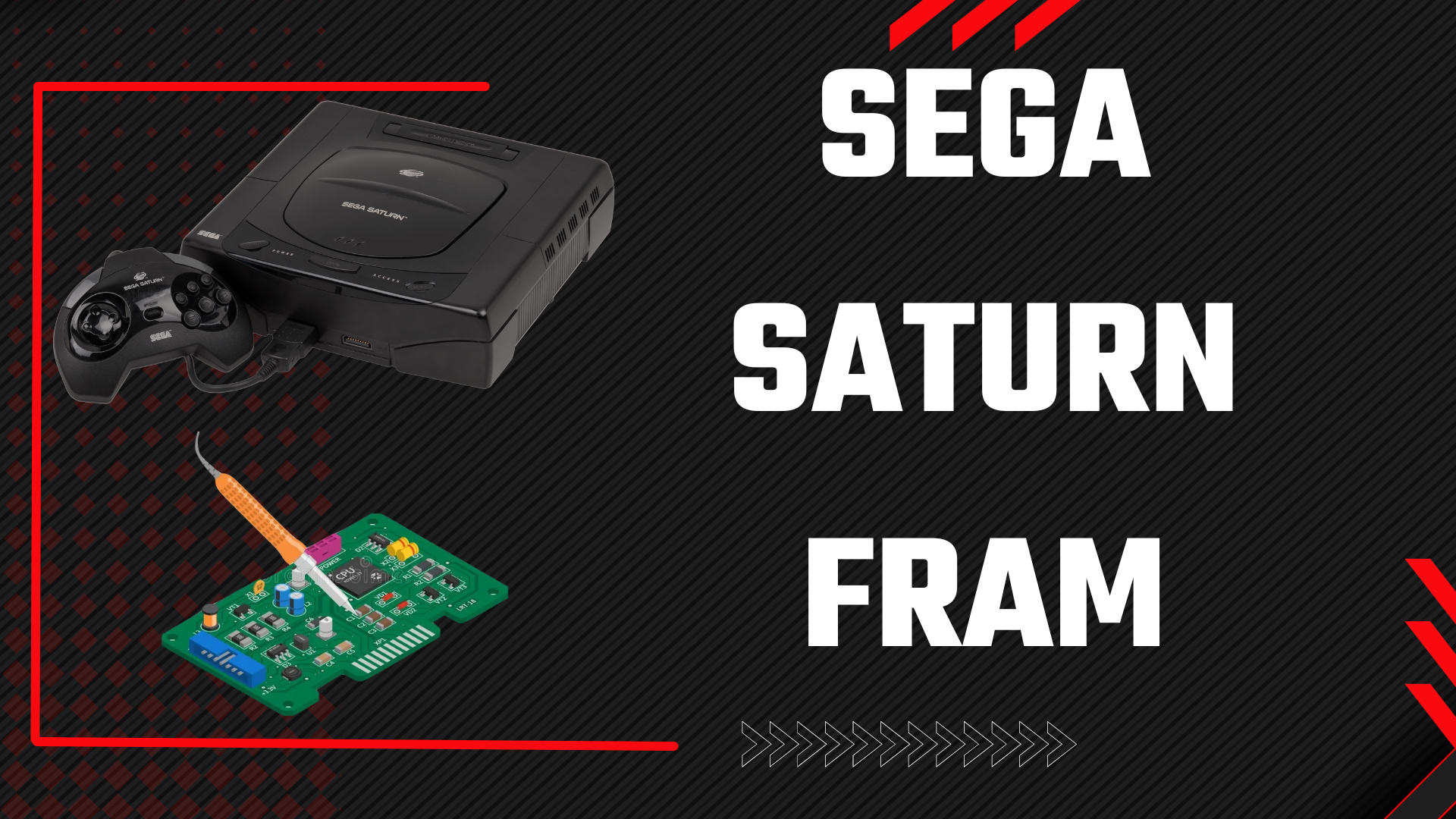The Saturn had a number of questionable design quirks that set it apart from its competitors at the time - chief among these being the battery backed SRAM. Unlike the Playstation, the Saturn did not have memory cards to store save data and instead relied on a small CR2032 battery to keep power to the SRAM and remember the clock settings. In theory this simplified things for consumers as game saves were stored on the console and could be managed without the need of an external memory unit.
The problem is that the real time clock drains the small CR2032 battery quickly, and when the battery dies the save data is lost. Unless you were very good at remembering to change your battery every month or so, often times gamers would power on their console to find all of their hard earned game saves gone for good.
Fortunately there is a solution - swapping the SRAM with an FRAM chip allows us to bypass the troublesome RTC circuit, as the FRAM chip does not require a battery to maintain its save data.
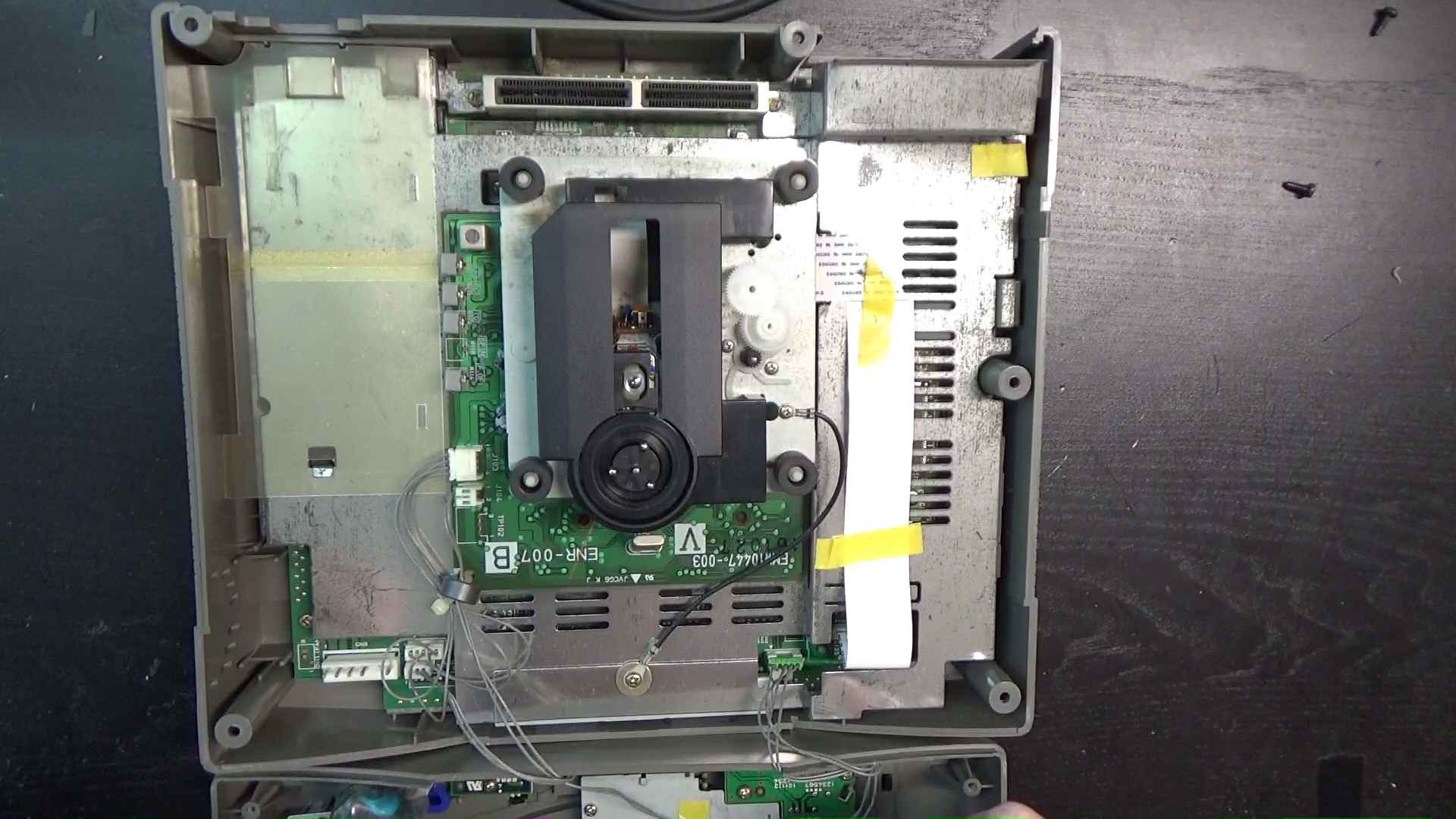
You will want to remove the bottom screws and unplug/remove the CD drive. This screw locations and plugs will differ depending on your specific model Saturn. Here I have a first revision original Japanese model, which has the power supply attached to the lid. There are 2 plugs on the CD drive itself and 3 on the motherboard that should be removed. Also, the grounding strap (black wire) will have to be removed.
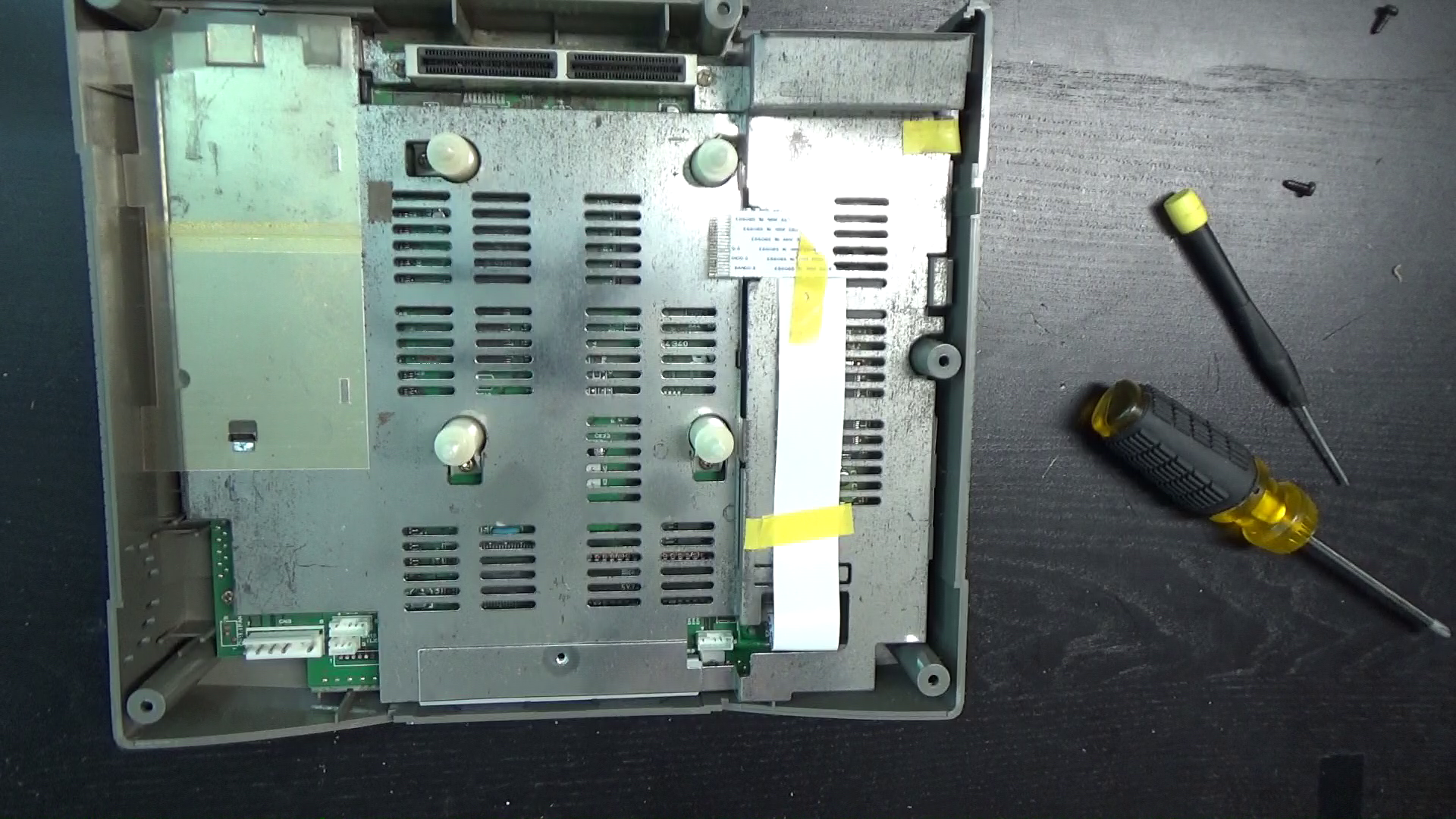
The shielding also has to be removed, which can be tricky as in addition to having screws in odd places it is latched to the bottom at the right side of the console.
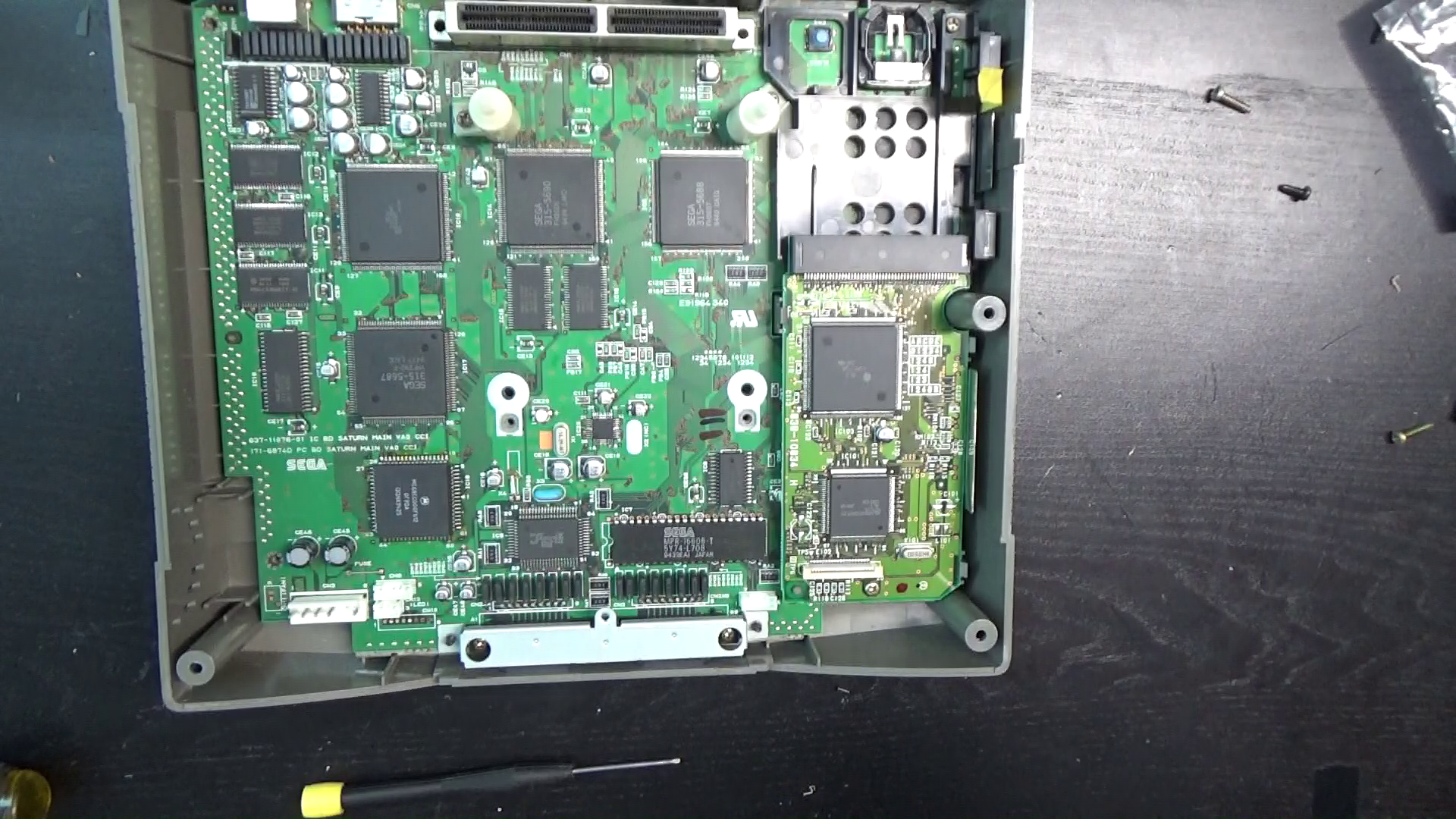
There is no need to remove the CD posts, but it makes it easier to heat the original RAM chip if you remove the bottom 2.

Hot air is the best solution to get the old chip out. You may want to cover the nearby components with Kapton tape as an extra precaution. It is not really necessary if you are careful, as the components are spaced pretty far from each other.
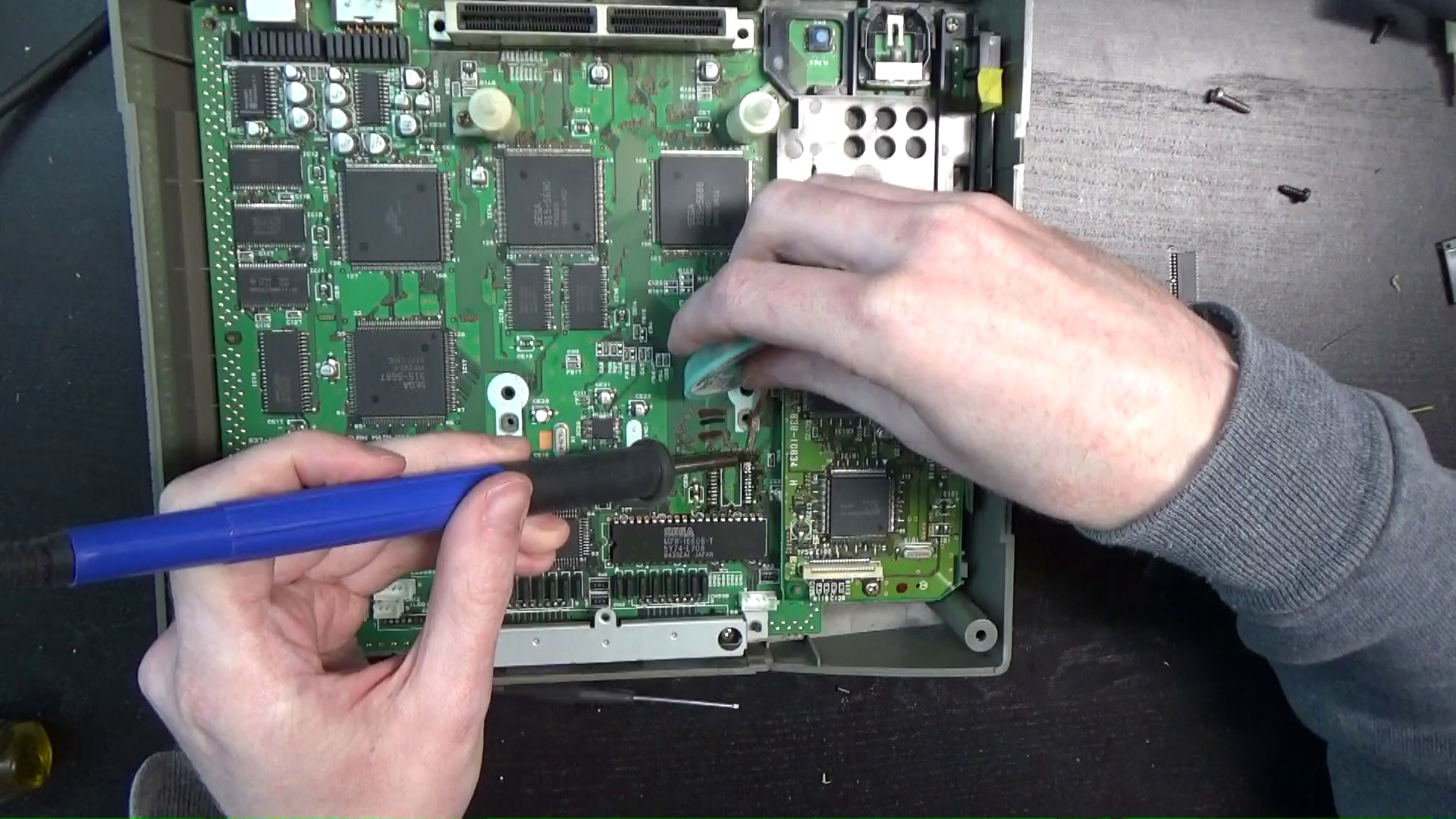
As always, be sure to clean the pads in order to prepare them for the upgrade. Dragging some solderwick across them is ideal and should pick up the old solder.

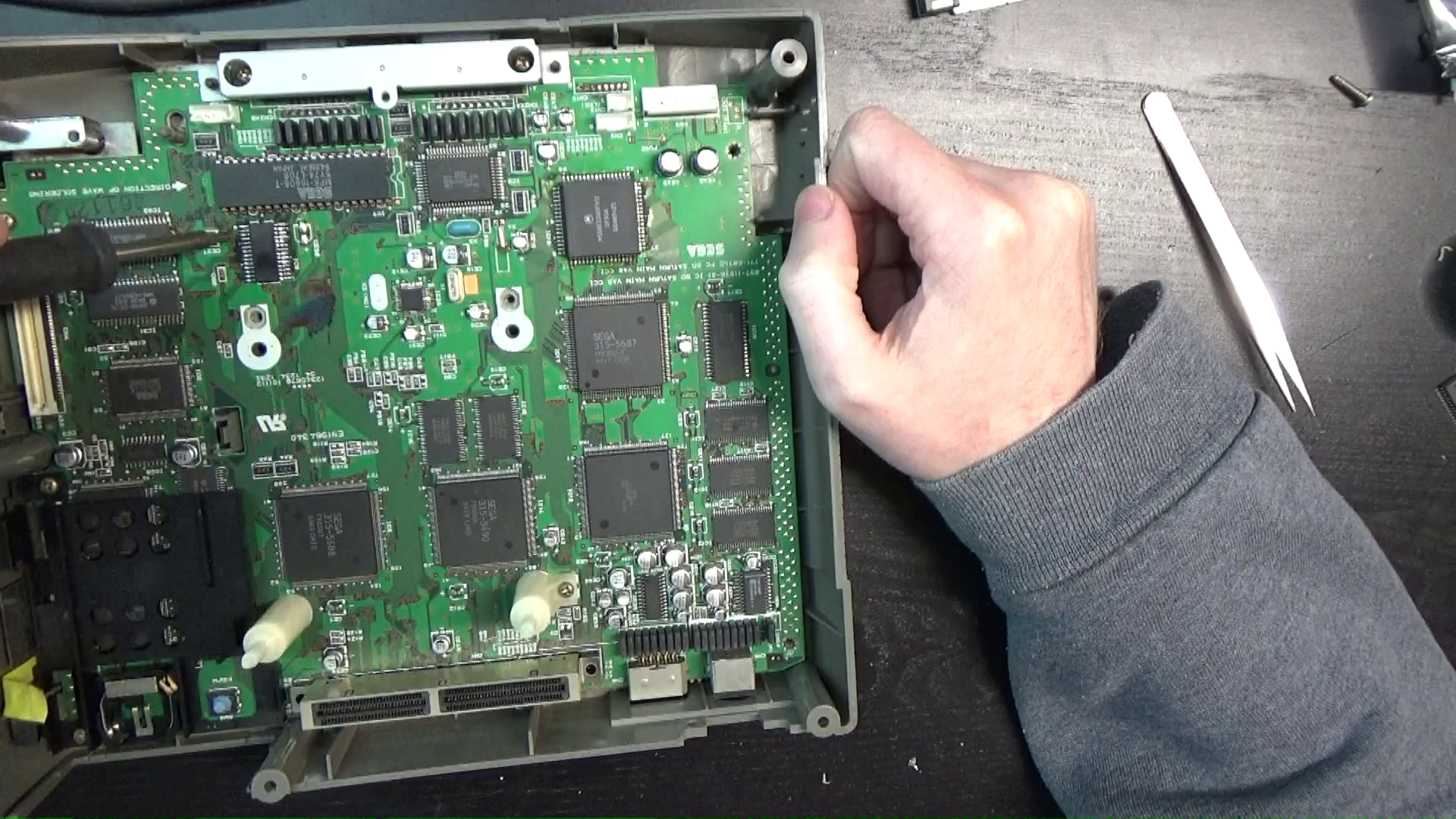
Removing the MPEG bracket to give yourself some more room is advisable when performing this mod
I recommend filling one of the pads with solder before you add the new chip, and then line it up and tack down one of the top pins to start. You can drag solder or just do a few pins at a time for the rest. Either way, make sure to use plenty of flux. Also ensure that pins #22 and #28 are lifted and not making contact with the pads - we will connect these elsewhere later.
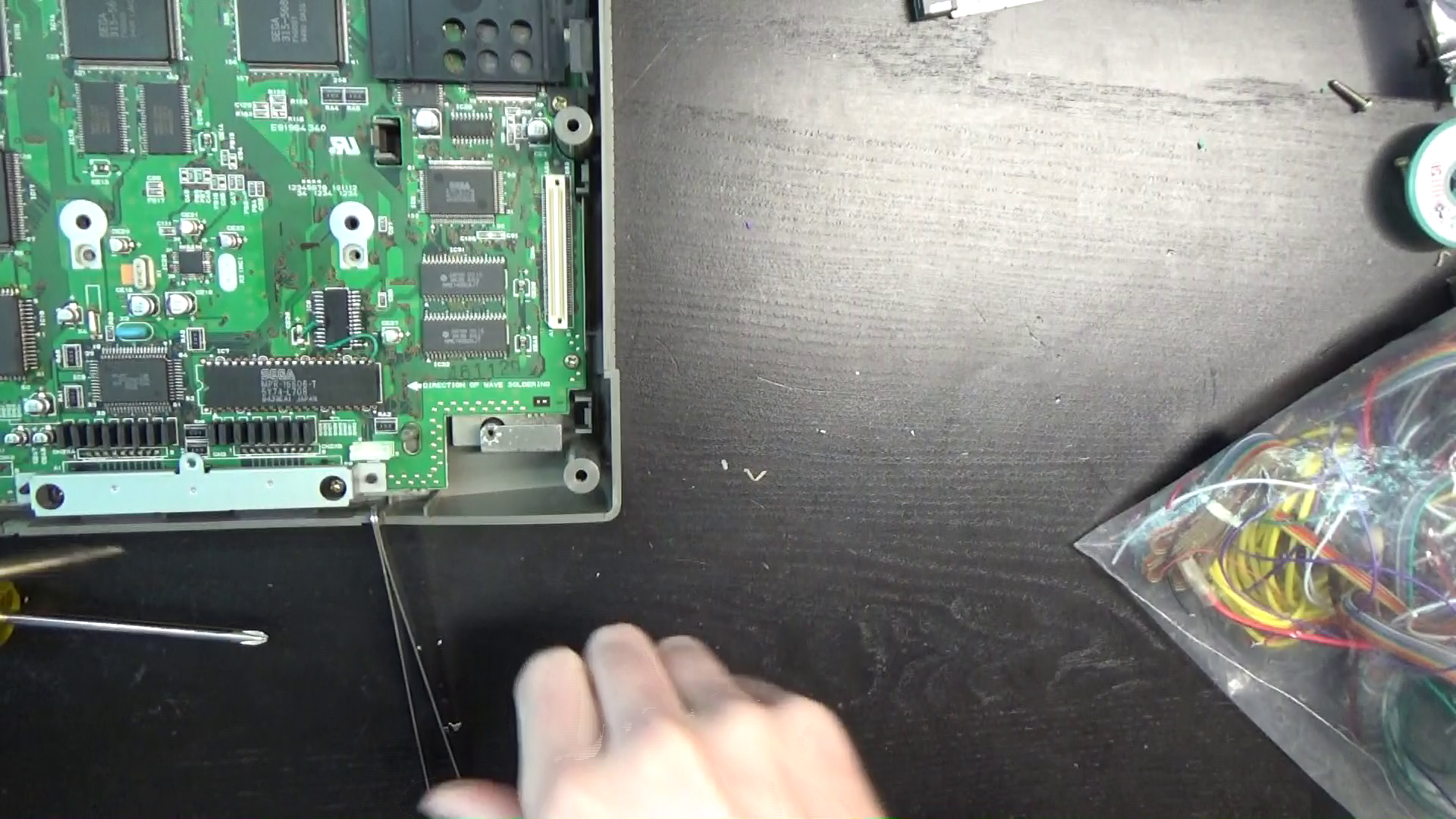
The original chip was powered via pin 22, however the new chip requires a ground connection on that same pin. Luckily on the model 1 there happens to be an empty capacitor pad here, so that is the ideal place to pull ground from.
Pin 28 is a 5V circuit and can be powered from the top pin on the chip directly below the FRAM. This is to prevent issues with the battery power & RTC clock circuit.
A video of the install.

